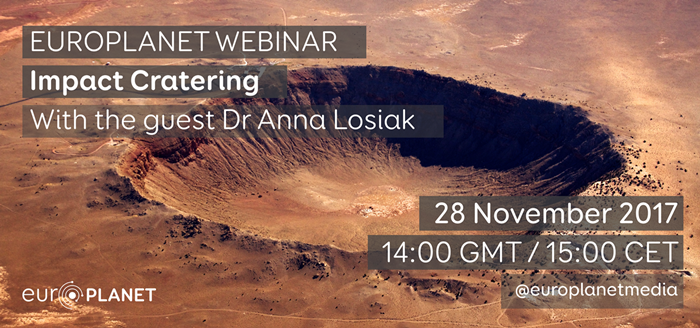What can we learn by studying impact craters on Earth? And how can we avoid the fate of dinosaurs? Join on 28 November 2017, 14:00 GMT / 15:00 CET: “Impact cratering – the most important geological process in our Solar System” with Dr Anna Losiak.

Register and send your questions https://goo.gl/forms/zcE7muAVoxEHk4Vo1 and join the webinar at https://zoom.us/j/355302963

Impact cratering is currently the most important geological process in our Solar System and (most probably) on most of the exoplanets. It is modifying planetary surfaces by creating gigantic scars on its surface, and it can also induce planetary-scale changes such as the formation of our own Moon or changing the direction of Venus rotation. It is known to influence the life on Earth, most famously by killing dinosaurs, but also by fostering life thanks to delivering water and organic material to our planet. Despite the importance of this geological process, we know relatively little about it. It is partially due to the fact that it is a relatively young field in geology – the first crater was accepted as being formed by an asteroid hitting the Earth only in 1960’s. Moreover, because of Earth’s very active surface geology removing signs of such extra-terrestrial encounters, we currently know about only 190 impact structures on Earth – ranging from 13 m in diameter and only 10-year-old Carancas crater in Peru, up to 300 km in diameter and 2,1 Gy old Vredefort crater in the Republic of South Africa.
